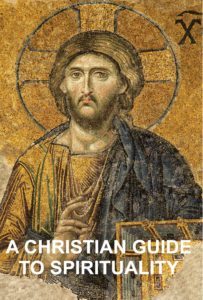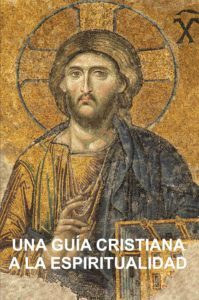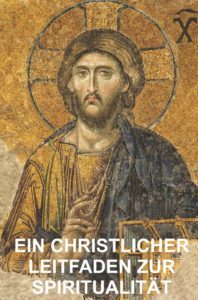Stephen W. Hiemstra's Blog, page 120
April 30, 2021
On Earth as in Heaven

“Your kingdom come, your will be done, on earth as it is in heaven.” (Matt 6:10)
By Stephen W. Hiemstra
The next two phrases in Jesus’ prayer—“Your kingdom come, your will be done, on earth as it is in heaven”—are one sentence in the Greek text. These phases repeat the same thought in different ways. Together they express, in a highly emphatic way, the idea that we want God’s desires to prevail in our lives, not ours. With this prayer, the disciple radically commits heart and mind to the attainment of God’s holy kingdom on earth.
The synoptic Gospels begin citing John the Baptist’s famous phrase: “Repent, for the kingdom of heaven is at hand.” (Matt 3:2) In the gospel of Matthew, John the Baptist introduces the phrase, kingdom of heaven, while Jesus introduces the phrase, kingdom of God, in the gospels of Mark and Luke. Thus, while the Baptist focused on judgment, Jesus’ stressed salvation (Matt 3:10; Matt 4:23).
Where does this kingdom language come from? [1]
This kingdom language hints at a restoration of the Garden of Eden. In Eden we see a picture of a world uncorrupted by sin. Adam and Eve rest with God and have access to the Tree of Life. Before the fall, there is no death, no strife, and no corruption. After the fall, there is death, strife, and sin. The kingdom of heaven restores the uncorrupted world of Eden.
One clue of this creation theme echoing Eden is the appearance of strange animal behaviors and spiritual beings. In Isaiah, for example, we read:
The wolf shall dwell with the lamb, and the leopard shall lie down with the young goat, and the calf and the lion and the fattened calf together; and a little child shall lead them. (Isa 11:6)
In Jesus’ birth and resurrection accounts, angels appear (e.g. Luke 2:10, Luke 24:4). Not surprisingly, the tree of life returns in the Apostle John’s vision of heaven (Rev 22:2).
What are we to conclude? The restoration of Eden in God’s new kingdom presents an image of hope. The resurrection of Christ has inaugurated a new kingdom that has not yet been fully realized. In praying for this new kingdom to arrive, we look beyond the present death, strife, and sin to hope for the joy that is to come.
[1] Strassen and Gushee (2003, 22–23, 35) draw a parallel between the beatitudes in Matt 5:3-10 and Isa 61:1-11. Their focus on Isaiah is attractive because Jesus himself cites Isa 61:1 already in his “call sermon” in Nazareth (Luke 4:18-19).
References
Stasssen, Glen H. and David P. Gushee. 2003. Kingdom Ethics: Following Jesus in Contemporary Context. Downers Grove, IL: IVP Academic.
On Earth as in Heaven
Also see:
Preface to A Christian Guide to Spirituality
Other ways to engage online:
Author site: http://www.StephenWHiemstra.net
Purchase Book: http://www.T2Pneuma.com
Newsletter: https://bit.ly/Bright_2021
The post On Earth as in Heaven appeared first on T2Pneuma.net.
En la Tierra Como en el Cielo

“Venga Tu reino. Hágase Tu voluntad, Así en la tierra como en el cielo.” (Matt 6:10 NBH)
Por Stephen W. Hiemstra
Las próximas dos frases en la oración de Jesús—”Venga Tu reino. Hágase Tu voluntad, Así en la tierra como en el cielo”—son una frase en el texto griego. Estas frases repiten el mismo pensamiento de maneras diferentes. Juntos, se expresan de una manera enfático la idea que deseamos la voluntad de Dios a prevalecer en nuestras vidas, no la nuestra. Con esta oración, el discípulo radicalmente comete la corazón y la mente a la logro del reino santo de Dios en la tierra.
Los evangélicos sinópticos empiezan citando la frase famoso de Juan el Bautista: “Arrepiéntanse, porque el reino de los cielos se ha acercado.” (Matt 3:2 NBH) En el evangélico de Mateo, Juan el Bautista introduce la frase, el reino de los cielos, mientras Jesús introduce la frase, el reino de Dios, en los evangélicos de Marco y Lucas. Por lo tanto, mientras el Bautista centra por juicio, Jesús hizo hincapié en salvación (Matt 3:10; Matt 4:23).
¿De donde viene este termino de reino? [1]
Este termino de reino sugiere la restauración de la Jardín de Edén. En Edén vemos un pintura de un mundo sin pecados. Adán y Eva resta con Dios y tienen acceso del Árbol de la Vida. Antes la Caída, no era la muerte, no la lucha, y no la corrupción. Después la Caída, hubo muerte, lucha, y pecados. El reino de los cielos restaura el incorrupto mundo de Edén.
Una pista de esta tema de creación que refleja Edén es la aparición de comportamientos animales extraños y seres espirituales. En Isaías, por ejemplo, leemos:
El lobo morará con el cordero, Y el leopardo se echará con el cabrito. El becerro, el leoncillo y el animal doméstico andarán juntos, Y un niño los conducirá. (Isa 11:6 NBH)
En nacimiento y resurrección cuentas de Jesús, los ángeles aparecen (e.g. Luke 2:10, Luke 24:4). No es sorprendente, el árbol de la vida vuelve en el visión de el Apóstol Juan del cielo (Rev 22:2).
¿Que concluimos de todo esto? La restauración de Edén en el reino nuevo de Dios presenta una imagen de esperanza. La resurrección de Cristo ha inaugurado un reino nuevo que no es aún realizado completamente. En orando para este reino nuevo a llegar, miramos más allá el presente muerte, lucha, y pecados a esperar para el gozo que está por venir.
[1] Strassen y Gushee (2003, 22-23, 35) establecer un paralelismo entre las bienaventuranzas en Mateo 5: 3-10 y Isaías 61: 1-11. Su enfoque en Isaías es atractivo porque el propio Jesús cita Isaías 61: 1 ya en su “sermón llamada” en Nazaret (Luke 4, 18-19).
REFERENCIA
Stasssen, Glen H. and David P. Gushee. 2003. Kingdom Ethics: Following Jesus in Contemporary Context. Downers Grove, IL: IVP Academic.
En la Tierra Como en el Cielo
Ver también:
Prefacio de La Guía Cristiana a la Espiritualidad
Otras formas de participar en línea:
Sitio del autor: http://www.StephenWHiemstra.net
Comprar Libro: http://www.T2Pneuma.com
Boletín informativo: https://bit.ly/Bright_2021
The post En la Tierra Como en el Cielo appeared first on T2Pneuma.net.
Im Himmel so auf Erden

Von Stephen W. Hiemstra
Dein Reich komme. Dein Wille geschehe wie im Himmel so auf Erden. (Matt 6:10)
Die nächsten beiden Sätze im Gebet Jesu—Dein Reich komme. Dein Wille geschehe wie im Himmel so auf Erden—sind ein Satz im griechischen Text. Diese Sätze wiederholen denselben Gedanken auf unterschiedliche Weise. Zusammen drücken sie auf sehr nachdrückliche Weise die Idee aus, dass wir wollen, dass Gottes Wünsche, nicht unserem, in diesem Leben überwiegen. Mit diesem Gebet verpflicht sich der Jünger Herz und Verstand radikal für die Erlangung des heiligen Reiches Gottes auf Erden.
Die synoptischen Evangelien beginnen zitieren der berühmte Satz von Johannes dem Täufer: “Tut Buße, denn das Himmelreich ist nahe herbeigekommen!” (Matt 3:2) Im Matthäusevangelium führt Johannes der Täufer den Satz Himmelreich ein, während Jesus den Satz Reich Gottes in die Evangelien von Markus und Lukas einführt. Während sich der Baptist auf das Gericht konzentrierte, betonte Jesus die Erlösung (Matt 3:10; 4:23).
Woher kommt diese Königreichssprache?
Diese Königreichssprache deutet auf eine Wiederherstellung des Gartens Eden hin. In Eden sehen wir ein Bild einer Welt nicht von Sündekorruptiert. Adam und Eva ruhen bei Gott und haben Zugang zum Baum des Lebens. Vor dem Fall gibt es keinen Tod, keinen Streit und keine Korruption. Nach dem Fall gibt es Tod, Streit, und Sünde. Das Himmelreich stellt die unverdorbene Welt Eden wieder her. Ein Hinweis auf dieses Schöpfungsthema, das Eden widerspiegelt, ist das Auftreten seltsamer Tierverhalten und spiritueller Wesen. In Jesaja lesen wir zum Beispiel:
Da wird der Wolf beim Lamm wohnen und der Panther beim Böcklein lagern. Kalb und Löwe werden miteinander grasen, und ein kleiner Knabe wird sie leiten. (Isa 11:6)
In Jesu Geburts- und Auferstehungsberichten erscheinen Engel (e.g. Luke 2:10, Luke 24:4). Es überrascht nicht, dass der Baum des Lebens in der Vision des Himmel von Apostels Johannes zurückkehrt (Rev 22:2).
Was sollen wir daraus schließen? Die Wiederherstellung von Eden in Gottes neuem Reich gibt ein Bild der Hoffnung. Die Auferstehung Christi hat ein neues Königreich eröffnet, das noch nicht vollständig verwirklicht wurde. Wenn wir für die Ankunft dieses neuen Königreichs beten, schauen wir über den gegenwärtigen Tod, Streit und die Sünde hinaus und hoffen auf die Freude, die kommen wird.
Im Himmel so auf Erden
Siehe auch:
Einleitung auf Ein Christlicher Leitfaden zur Spiritualität
Andere Möglichkeiten, sich online zu engagieren:
Autoren Seite: http://www.StephenWHiemstra.net
Herausgeber Seite: http://www.T2Pneuma.com
Mitteilungsblatt: https://bit.ly/Bright_2021
The post Im Himmel so auf Erden appeared first on T2Pneuma.net.
April 27, 2021
Rozelle Writes Description

Ron Rozelle. 2005. Description and Setting: Techniques and Exercises for Crafting a Believable World of People, Places, and Events. Write Great Fiction Series. Cincinnati: Writer’s Digest Books.
Review by Stephen W. Hiemstra
When I aspired to being an author in my early college years and read a lot of literary books, I cringed and lived in fear of writing detailed descriptions. Even before I studied a lot of mathematics, learned to program computers, and developed the analytical mind of an economist, I dreamed in black & white and could not remember what I ate for breakfast or be described as chatty. I suffered from typical-guy syndrome. After I started writing on a regular basis, Ron Rozelle’s book, Description and Setting, appeared on my radar.
IntroductionRozelle describes his purpose in writing with these words:
“We’ll look at various conventions and devices that undergird effective writing (craft), we’ll dissect specific examples of how established writers have provided description and established setting (models), and we’ll look at ways that you can go about the planning, writing, and fine tuning necessary to write quality fiction (wordsmithing).” (3)
For Rozelle, description that does not advance the story is clutter, whether the piece is literary fiction (more description) or popular fiction (less description) (9). Sensory descriptions evoking sights, taste, touch, and hearing help raise the credibility of the writer and help set the mood or tone of a particular scene, anchoring it in time and space (10-11). Striking the right balance between plot, dialogue, and description serves to convey the voice of the author primarily through the emotions brought forward.
Background and OrganizationRozelle is a graduate of Sam Houston State University in Huntsville, Texas, a retired writing professor, and the author of numerous books, many with a Texas theme. He writes in twelve chapters followed by an appendix and an index. The chapters are:
The Importance of Description and SettingLearning to Pay AttentionUsing All the Tools in Your KitShowing, Telling and Combining the TwoSensory DescriptionDescription of CharactersTime and PlaceDescription and Setting in Specialized FictionUsing Description and Setting to Drive the StoryWorking the MagicToo Little, Too MuchDescription and Setting in Writing ProcessOther books in the Write Great Fiction series focus on dialogue, characters, viewpoint, and plot & structure. Two that I previously reviewed can be found among the references below.
Showing ResemblancePart of the art of writing is learning to say things uniquely. Rozelle writes:
“One of the most effective ways to convey a particular image to your reader is to show him something that it is similar to. Metaphors, similes, analogies, personification, symbolism, and allusions are all ways to nudge your years towards making the connection that you want them to make.” (45)
An analogy is a carefully laid out comparison. A metaphor is an implied analogy and a simile is more explicit than a metaphor and is prefaced by like or as (45-47). A personification is an object that takes the attributes of a living person (50-51). A symbol is an object that represents something other than itself (52). For example, the cowboy is a symbol of the American west, particularly in the nineteenth century, and of the American spirit more generally. An allusion recalls a famous person, event or written piece (48-49).
Describing people, events, places, and times in clever ways spices up your writing and helps it stand out from previous work.
AssessmentRon Rozelle’s Description and Setting provides a helpful and readable guide to writing description. He makes artful use of familiar books and films to highlight his points. Writing students and authors polishing their craft will find this book useful.
ReferencesBell, James Scott. 2004. Plot and Structure: Techniques and Exercises for Crafting a Plot that Grips Readers from Start to Finish. Write Great Fiction series. Cincinnati: Writer’s Digest Books. (review)
Bell, James Scott. 2008. Revision & Self-Editing: Techniques for Transforming Your First Draft into a Finished Novel. Write Great Fiction series. Cincinnati: Writer’s Digest Books. (review).
Footnoteshttps://www.penguinrandomhouse.com/se....
Rozelle Writes DescriptionOther ways to engage online:Author site: http://www.StephenWHiemstra.netPublisher site: http://www.T2Pneuma.com Newsletter: https://bit.ly/Bright_2021The post Rozelle Writes Description appeared first on T2Pneuma.net.
April 26, 2021
The Name: Monday Monologues (podcast) April 26, 2021

By Stephen W. Hiemstra
This morning I will share a prayer and reflect on the . After listening, please click here to take a brief listener survey (10 questions).
To listen, click on this .
Hear the words; Walk the steps; Experience the joy!
The Name: Monday Monologues (podcast) April 26, 2021
Also see:
Monday Monologue On March 26, 2018
Other ways to engage online:
Author site: http://www.StephenWHiemstra.net,
Publisher site: http://www.T2Pneuma.com.
Newsletter: https://bit.ly/Bright_2021
The post appeared first on T2Pneuma.net.
April 25, 2021
Prayer Day 23

By Stephen W. Hiemstra
Sovereign Father, lover of our souls, compassionate spirit.
Holy, holy, holy is Your name. We praise you for creating us in Your image and loving us intrinsically, just as we are. Grant us the eyes to see others as You see them. Give us ears that hear Your voice above the crowds screaming for our attention. In the precious name of Jesus, Amen.
Prayer Day 23
Also see:
Believer’s Prayer
Other ways to engage online:
Author site: http://www.StephenWHiemstra.net
Purchase Book: http://www.T2Pneuma.com
Newsletter: https://bit.ly/Bright_2021
The post Prayer Day 23 appeared first on T2Pneuma.net.
Oración Dia 23
Por Stephen W. Hiemstra
Padre Soberano, amante de nuestras almas, Espíritu Compasivo.
Santo, Santo, Santo es tu nombre. Te alabamos por crear nos a tu imagen y por amar nos intrínsecamente, tal y como somos. Concedenos los ojos para ver los demás como tu los ves. Da nos oídos que escuchar tu voz por encima de las multitudes que gritan por nuestra atención. En el precioso nombre de Jesús oramos, Amén.
Oración Dia 23
Ver también:
Prefacio de La Guía Cristiana a la Espiritualidad
Otras formas de participar en línea:
Sitio del autor: http://www.StephenWHiemstra.net
Comprar Libro: http://www.T2Pneuma.com
Boletín informativo: https://bit.ly/Bright_2021
The post Oración Dia 23 appeared first on T2Pneuma.net.
Gebetstag 23
Vor Stephen W. Hiemstra
Souveräner Vater, Liebhaber unserer Seelen, Mitfühlender Geist.
Heiliger, heiliger, heiliger ist dein Name. Wir preisen dir dafür, dass du uns nach deinem Bild geschaffen und uns von Natur aus so geliebt hast, wie wir es sind. Gewähre uns die Augen, um andere so zu sehen, wie du sie sehen. Gib uns Ohren, die deine Stimme über der Menge hören, die nach unserer Aufmerksamkeit schreit. Im kostbaren Namen Jesu, Amen.
Gebetstag 23
Siehe auch:
Einleitung auf Ein Christlicher Leitfaden zur Spiritualität
Andere Möglichkeiten, sich online zu engagieren:
Autoren Seite: http://www.StephenWHiemstra.net
Herausgeber Seite: http://www.T2Pneuma.com
Mitteilungsblatt: https://bit.ly/Bright_2021
The post Gebetstag 23 appeared first on T2Pneuma.net.
April 23, 2021
Praise the Name

“Pray then like this: Our Father in heaven, hallowed be your name.” (Matt 6:9)
By Stephen W. Hiemstra
The Lord’s Prayer reminds us to honor God’s name in keeping with the Third Commandment—do not take the Lord’s name in vain—because all the other commandments are leveraged on it (Exod 20:7).
Why keep the other commandments, if we dishonor God’s name?
The practical implications of honoring God arise because we are created in God’s image. Because we are created in the image of God, human life has intrinsic value—value in itself that does not change with life events. Because life has intrinsic value, we cannot accept discrimination, injustice, abuse, mistreatment of prisoners, weapons of mass destruction, euthanasia, abortion, designer babies, and a host of other detestable practices. Our human rights—a measure reflecting intrinsic value—exist because we are created in the image of a Holy God.
Our capitalist society focuses, not on intrinsic values, but on market values. Market values change with circumstances—they are volatile. Your value as a person implicitly depends on your productivity. If you are young, old, or unable to work, then you are a dependent—a burden on working people. The focus on market values inherently disrespects God’s image. When God is not honored; neither are we.
The strong influence of market values on our self-image explains, in part, is why depression rates tend to be highest among population groups—like the young adults and the senior citizens—who are unable to work. The rate of depression, suicide, anxiety disorders, addictions, and divorce appear to be correlated, in part, with changing job prospects.
When God’s name is dishonored, we also become more prone to idolatry (Rom 1:21-23). Why worship the God of the Bible, when my income and status in society depends more on my family legacy, education, and hard work? So I naturally run to all sorts of substitutes for God that work, like insurance, to manage the ups and downs of life. Alternatively, I can obsess about the security of my home, my spouse, and my children.
The implications of honoring the name of God come together in the debate over euthanasia—the right to die. If my self-image and my dignity in society are both increasingly subjected to the same market values, then I will surrender myself to assisted suicide precisely when I need support from my family. And, of course, they will agree because I have become a burden both financially and emotionally. Consequently, euthanasia is evil masquerading as compassion. We are created in the image of a holy God who declares that life is good and sacred (Gen 1:31).
Give glory to God. Honor the Name above all names. You are created in God’s image.
Praise the Name
Also see:
Preface to A Christian Guide to Spirituality
Other ways to engage online:
Author site: http://www.StephenWHiemstra.net
Purchase Book: http://www.T2Pneuma.com
Newsletter: https://bit.ly/Bright_2021
The post appeared first on T2Pneuma.net.
Alaba el Nombre
“Ustedes, pues, oren de esta manera: Padre nuestro que estás en los cielos, Santificado sea Tu nombre.” (Matt 6:9 NBH)
Por Stephen W. Hiemstra
El Padre Nuestro nos recuerda a honrar el nombre de Dios a observando el tercero mandamiento—”No tomarás el nombre del SEÑOR tu Dios en vano” —porque todo los otros mandamientos son apalancamiento de él (Exod 20:7 NBH).
¿Porque observar los otros mandamientos, si deshonramos el nombre de Dios?
Las implicaciones practicas de honrando Dios viene porque fuimos creados en la imagen de Dios. Por que somos creado en la imagen de Dios, la vida humana tiene valor intrínseca—valor en si mismo que no cambia con los eventos de la vida. Por que la vida tiene valor intrínseca, no aceptamos discriminación, injusto, abuso, maltrato de prisioneros, armas de destrucción masiva, la eutanasia, el aborto, bebés de diseño, y una serie de otras prácticas detestables. Nuestros derechos humanos—un medida que refleja valor intrínseca—existe porque hemos sido creado en la imagen de un Dios Santo.
Nuestra sociedad capitalista se centra, no en los valores intrínseco, sino en los valores del mercado. Los valores del mercado cambian con las circunstancias—son volátiles. Su valor como una persona depende implícitamente de su productividad. Si eres joven, antigua, o ni capaz de trabajar, entonces usted es un dependiente de una carga por las personas que trabajar. Inherentemente, el enfoque de valores de mercado irrespeta la imagen de Dios. Cuando Dios no se honra; no nos honra.
La fuerte influye de los valores de mercado sobre nuestra auto imagen se explica, en parte, por que las índices de depresión son mas alto entre las grupas de población—como los jóvenes y los ancianos—quien no pueden trabajar. Las tasas de depresión, suicidio, trastornos de ansiedad, y divorcio parecen estar correlacionado, en parte, con el cambio de las perspectivas de empleo.
Cuando el nombre de Dios es deshonrado, seriamos también más propensos a idolatría (Rom 1:21-23). ¿Por qué debo adorar de Dios de la biblia cuando mi ingreso y estatus depende más por mi legacía de la familia, educación, y obra dura? Así que yo naturalmente correo tras cada sustituta para Dios cual operen, como seguros, a amortiguar las altas y bajas de la vida. Alternativa, puedo obsesionarme con la seguridad de mi casa, mi cónyuge, y mi hijos.
La implicaciones de honrando el nombre de Dios se unen en el debate sobre la eutanasia—el derecho de morir. Si mi auto identidad y mi dignidad en sociedad ambos progresivamente sujetado a los mismos valores de mercado, entonces yo seria entregarme mi misma al suicidio asistido precisamente cuando necesito apoyo lo mayoría de mi familia. Y, naturalmente, serian de acuerdo por que yo había ser una carga ambos financieramente y emocionalmente. En consecuencia, la eutanasia es malvado que disfrazar como compasión. Somos creado en la imagen de un Dios Santo que declara que la vida es bueno y santo (Gen 1:31)
Da gloria a Dios. Honra el nombre sobre todos nombres. Tú eres creado en la imagen de Dios.
Alaba el Nombre
Ver también:
Prefacio de La Guía Cristiana a la Espiritualidad
Otras formas de participar en línea:
Sitio del autor: http://www.StephenWHiemstra.net
Comprar Libro: http://www.T2Pneuma.com
Boletín informativo: https://bit.ly/Bright_2021
The post Alaba el Nombre appeared first on T2Pneuma.net.



